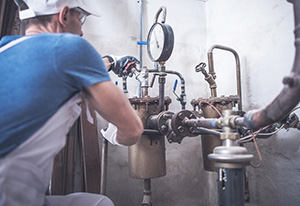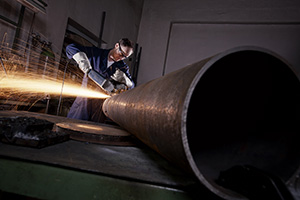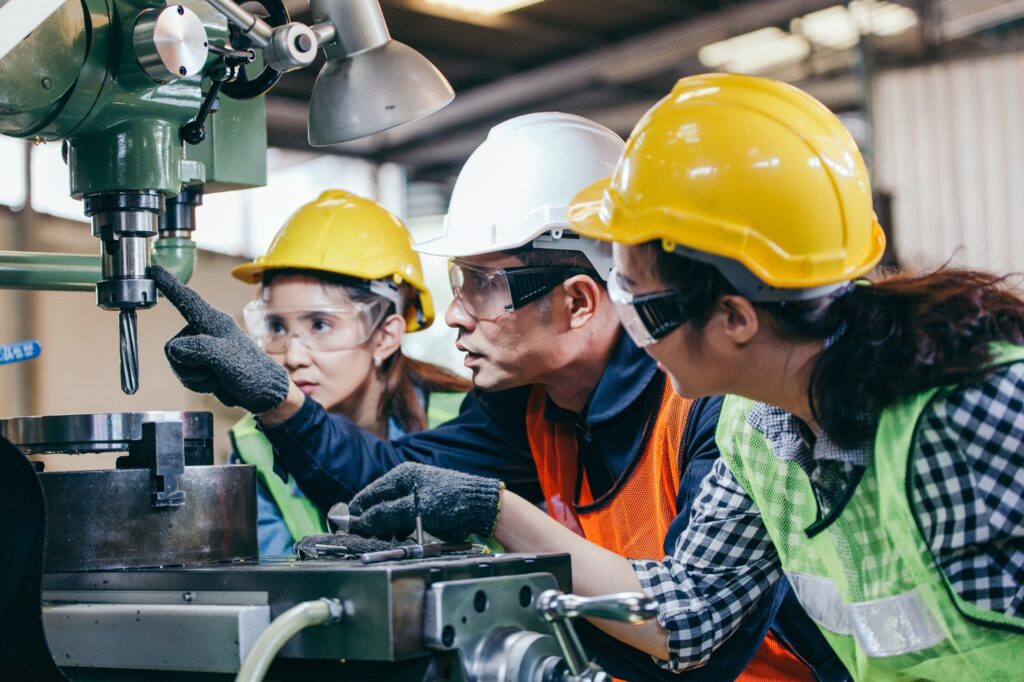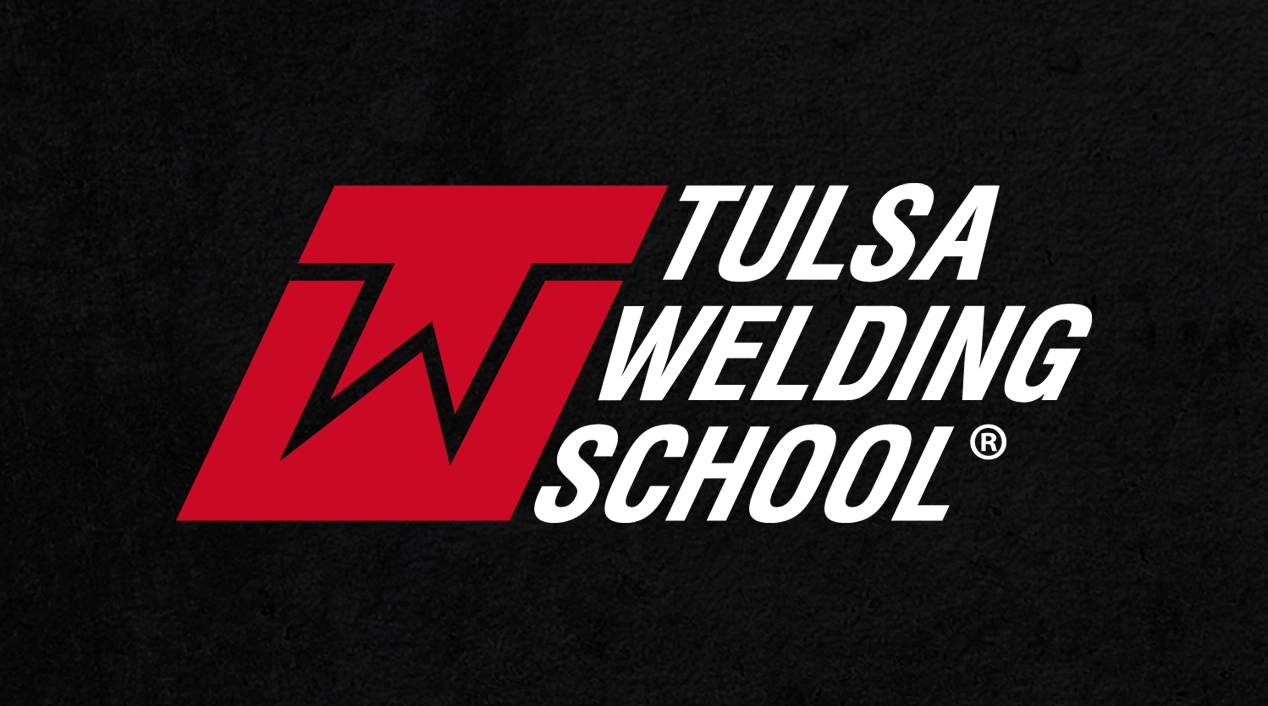TWS is a Great Training Option for Everyone
Learn more about how we can prepare you to advance your career.
What do plumbers and pipefitters have in common? Pipes! Both careers have these tradespeople installing, inspecting and repairing piping systems.
The scale of the work is what really sets these two skilled trades apart. Pipefitters usually work on much bigger pipes found in industrial settings. Plumbers are the pros you call to fix your bathroom and kitchen pipes.[1]
Read on to learn more about the differences and similarities between plumbers and pipefitters.
Differences Between Plumbers and Pipefitters
Some of the biggest differences between plumbers and pipefitters can be found in where they work, the types of pipes they work on and the skills they need for the job.
Have You Considered a Career in the Skilled Trades?
Fill out the form to recieve a no obligation info packet.
Where They Work
Plumbers tend to work in residential and commercial settings like homes and businesses. Pipefitters usually report to industrial worksites like factories or shipyards to install or repair heavy-duty pipes.
Plumbers
- Construction companies.
- Home building companies.[2]
- Self-Employed.[3]
Pipefitters
- Manufacturing plants.
- Commercial businesses.
- Navy or merchant marines.
- Petroleum industry.[4]
What They Do
Both tradespeople install, maintain and repair pipes, but their job tasks vary, a result in the differences in the scale of the systems they work on.
Plumbers

- Install, repair and maintain sewage lines, hot water heaters and water filtration systems.
- Unclog pipes and drains.
- Fix or replace water fixtures.
- Build or remodel bathrooms.
- Install or fix dishwashers and laundry machines.
- Troubleshoot plumbing systems.
- Work in compliance with local and state building codes.[5][6]
Pipefitters

- Install, repair and maintain pipes that carry chemicals, acids and gases.
- Service commercial heating and cooling systems.
- Work on fuel and delivery systems.
- Maintain and repair commercial water systems and waste disposal systems.
- Weld, cut and reshape pipe sections and components.
- Install piping to fitted compressors, meters, hydraulic and pneumatic controls, and pumps.
- Work on different pipe materials: PVC, copper, galvanized steel, stainless steel and Inconel.
- Verify safety requirements are met.[7]
Pipefitter Specializations
Pipefitter is sometimes an umbrella term that includes more specific job titles and specialties that focus on a certain type of pipe.

New: Industrial Maintenance
Learn About Our New Advanced Industrial Maintenance Program
Tulsa Welding School is proud to announce our newest program offering available at our Houston & Dallas Metro Campuses – Advanced Industrial Maintenance Technology! Learn the skills you need to take on the industries of manufacturing, distribution, energy production and facility maintenance in as few as 7 months.
- Gasfitters work with pipe systems that deliver gas or oxygen.
- Sprinklerfitters install and repair sprinkler systems for both commercial enterprises and private residences.
- Steamfitters install pipes for moving high-pressure steam, water and other substances.[8][9]
The Skills They Need
Working on pipe systems and getting the job done right requires both plumbers and pipefitters to have mechanical and troubleshooting skills, as well as physical strength.[10]
Since they usually don’t work on the same types of pipes or in the same settings, plumbers and pipefitters typically need skills that are unique to their professions and don’t intersect.
Plumber Skills
- Communication: This is necessary for planning work schedules, supervising workers and bidding on jobs. Plumbers also must be able to communicate technical equipment problems to customers in a way they’ll understand.
- Customer service: This is essential when working in people’s homes and businesses and for establishing longtime business relationships.
- Dexterity: Working well with one’s own hands is helpful when working in confined spaces.[11][12]
Pipefitter Skills
- Pipe fabrication and bending: Bending, grinding, and threading pipe might be required to replace sections of pipe systems. It can also be helpful on customized piping jobs.
- Welding: Fillet and butt welds are used for small and large pipes.
- Pipe installation and shoring methods: Rigging equipment is used for installing pipe below and above ground. Hydraulic and trench shoring systems are often employed when working with heavy pipelines.
Similarities Between Plumbers and Pipefitters
The Bureau of Labor Statistics (BLS) lists plumber and pipefitter jobs under the same category because they both work on pipes for a living. Steamfitters share the career classification, too.
Here are the latest employment facts and figures from the agency.
Job Outlook
The BLS predicts job growth that’s much faster than average for plumbers, pipefitters and steamfitters. While the average job growth rate for all occupations through 2026 will be 7 percent, it will be 16 percent for these tradespeople.
- Plumbers will be needed to install systems in new buildings and repair pipes in older ones.
- Sprinklerfitters will likely find jobs installing fire suppression systems as more states enact changes to building codes to improve safety.[13]
- Pipefitters will likely find work repairing the country’s aging infrastructure.
Salary
In 2017, plumbers, pipefitters and steamfitters earned an annual average salary for $52,590, reports the BLS.[14]
Becoming a Plumber or Pipefitter
Trades schools offer plumbing and pipefitter training, and enrolling in one of their programs is the first step to finding a lifetime career in these fields.
Students of these programs usually take classes in pipe system design, proper tool usage and safety. Pipefitters and steamfitters also typically have to take welding classes.
Discover more about the pipefitter career path.
[1] https://www.bls.gov/ooh/construction-and-extraction/plumbers-pipefitters-and-steamfitters.htm#tab-2
[2] https://money.usnews.com/careers/best-jobs/plumber
[3] https://www.bls.gov/ooh/construction-and-extraction/plumbers-pipefitters-and-steamfitters.htm#tab-3
[4] http://www.wisegeek.com/what-is-the-difference-between-plumbers-and-pipefitters.htm
[5] https://www.bls.gov/ooh/construction-and-extraction/plumbers-pipefitters-and-steamfitters.htm#tab-2
[6] https://learn.org/articles/Plumber_Career_Summary_Job_Outlook_and_Training_Requirements.html
[7] http://awsweldlink.org/careers/detail/pipefitter
[8] https://www.bls.gov/ooh/construction-and-extraction/plumbers-pipefitters-and-steamfitters.htm#tab-2
[9] http://work.chron.com/steamfitter-job-duties-11064.html
[10] https://www.bls.gov/ooh/construction-and-extraction/plumbers-pipefitters-and-steamfitters.htm#tab-4
[11] https://www.bls.gov/ooh/construction-and-extraction/plumbers-pipefitters-and-steamfitters.htm#tab-4
[12] https://www.thebalance.com/plumber-skills-list-2062459
[13] https://www.bls.gov/ooh/construction-and-extraction/plumbers-pipefitters-and-steamfitters.htm#tab-6
[14] https://www.bls.gov/ooh/construction-and-extraction/plumbers-pipefitters-and-steamfitters.htm#tab-1
This blog has been labeled as archived as it may no longer contain the most up-to-date data. For a list of all current blog posts, please visit our blog homepage at https://www.tws.edu/blog/







